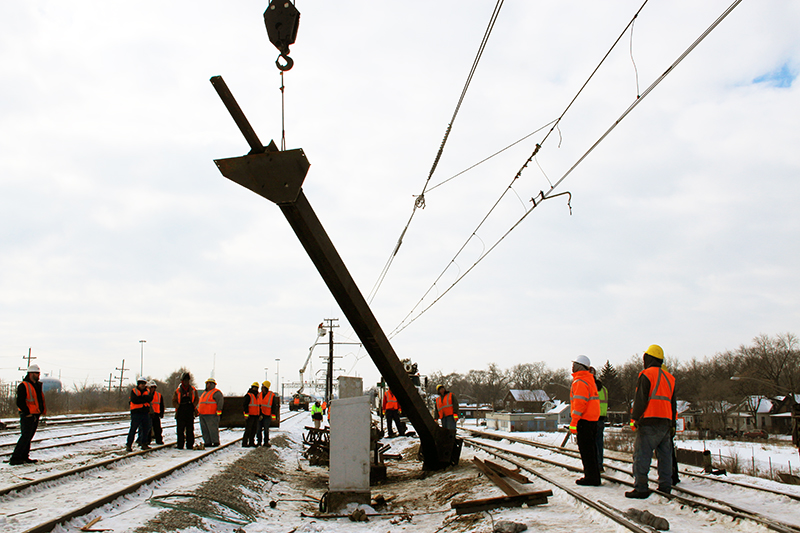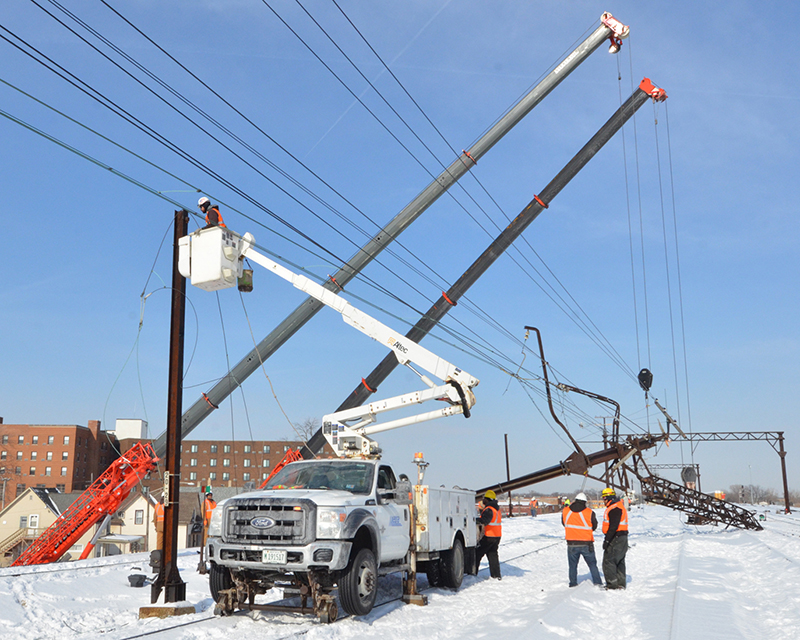 Metra Electric service resumed Monday after last week’s freight train derailment damaged commuter train infrastructure, causing a four-day suspension of service. Trains were running a modified schedule.
Metra Electric service resumed Monday after last week’s freight train derailment damaged commuter train infrastructure, causing a four-day suspension of service. Trains were running a modified schedule.

and remove the damaged
support structure on the
Metra tracks near Harvey.
(Provided photos)
Metra Spokesperson Meg Thomas-Reile said full service to the Homewood and Flossmoor stations will continue to be on a modified schedule through the rest of the week.
A CN freight train derailment happened near the Metra station in Harvey late Wednesday night, Jan. 30.
The derailment toppled one of the columns supporting a structure that bridged the tracks and held up the wire system, Thomas-Reile said. The structure collapsed over the tracks and pulled down more than a mile of the wires that feed power to two of the four tracks.
“Due to the extreme cold, the overhead wires that power the trains were contracted. A certain amount of contraction of the wires in cold weather is normal and expected, but the cold last week was not normal and exceeded the tolerances built into the system,” she said.

support structure hit by a
CN freight train Jan. 30,
shutting down Metra traffic.
Repairs are ongoing. A pair of cranes were used to hold the damaged structure in place while the remaining wires were secured.
Once the wires were secured, the damaged support was lifted onto a flatbed railcar and removed. The new structure was then bolted into place and wires were connected. Sections of wire that were damaged beyond repair were restrung.
Crews also had to inspect the lines from Kensington south for any damage caused by the derailment or the cold. Crews are still working on restoring service to the other tracks.
Thomas-Reile said the last disruption of a similar length was in June 2003 when a bridge burned in Riverdale. Service was shut down for nine days while a new bridge was built and passengers south of Riverdale were shuttled to the Rock Island Line.
